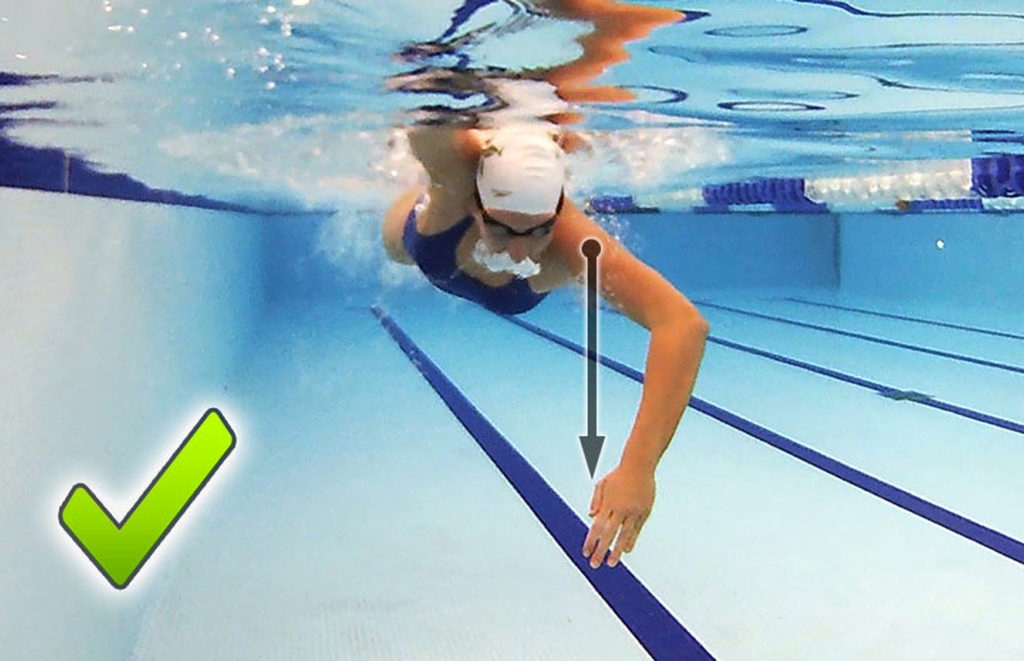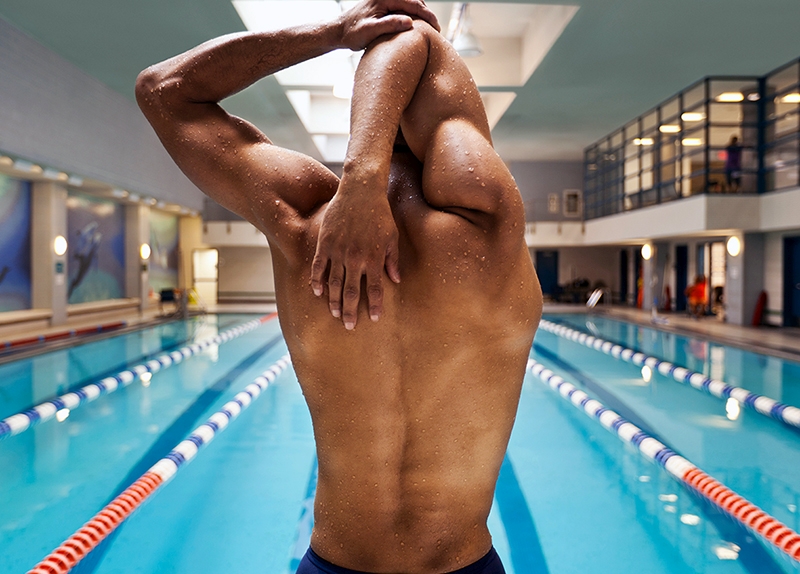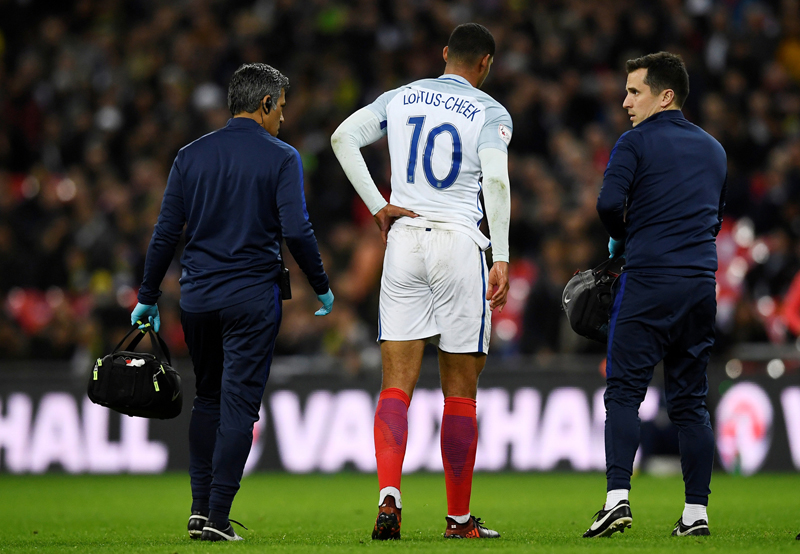You are viewing 1 of your 1 free articles. For unlimited access take a risk-free trial
Warm up for the water: what really works for swimming performance?
Trevor Langford explains the science behind constructing warm-up protocol specific to swimming, and how a properly designed warm up can not only prevent injury but also improve swimming performance.
In recent years, swimming has enjoyed a dramatic increase in popularity as a sport and as a recreational activity - both in the pool and also in the open water. An abundance of opinion exists across all sports as to what an ideal warm up should consist of; therefore the need to explore the warm up protocols specific to swimming is essential.The purpose of this article is to focus on how a warm-up protocol should be constructed specific to swimming and how it can prepare the body for the movements involved in the swimming action. A warm up has the purpose of preparing the swimmer physically and psychologically - not only to prevent the onset of injury, but also to maximise performance levels. The primary objective is injury prevention, which is referred to throughout this article (rather than a focus on enhancing swimming performance) although there may well be a crossover between the two. Why do we warm up? A warm up period incorporating both physiological and psychological elements allows for an opportunity to prepare the body for what is about to occur (training/ race etc). However, an appropriate swimming warm up has to comprise of more than a jog on the spot, a thigh stretch, or a quick length of the pool. An effective warm up needs to be:
- Progressive in its intensity
- Specific
Box 1: Benefits of a warm up prior to physical activity
A warm up not only raises the heart rate, but research has also demonstrated that it can achieve a number of additional positive changes within the body (see box 1)Int J of of Res in Human and So Sci. July, 2013, 1, 5, 52-55. It’s important to understand the changes in the muscle that occur as a result of a warm up protocol. When muscle tissue is warm there is a notable increase in the speed with which it can contract and relax, and the force that it is able to applyInt J of of Res in Human and So Sci. July, 2013, 1, 5, 52-55. The first few muscle contractions are often small and irregular due to the increased density of blood in the muscle, but with ongoing activity, blood flow is increased, which reduces the density of the blood.
The reduction in blood density is produced by the increased size of the blood vessels due to the muscle activity requiring increased blood flow to the area. The increased blood flow increases the rate at which oxygen and fuel is transported to the working muscles by means of the blood flow and therefore provides a greater resistance to injury. The overall result is a smoother and more forceful contraction, and the risk of soft tissue injury is greatly reducedInt J of of Res in Human and So Sci. July, 2013, 1, 5, 52-55.
Technique
There may also be technique discrepancies that a swimmer is prone to - for example a hand movement in freestyle being ‘across the centre line of the body’ (see figure 1). This could significantly increase the risk of shoulder impingement; therefore, the swimming section of the warm up allows the athlete an opportunity to work on technique discrepancies that may require attention and to rehearse the skill elementSports Med, 2003, 33, 6, 439-454.Figure 1: Correct hand position in freestyle

In freestyle, the hand position relative to the torso should not cross the centre line of the body. The correct positioning (close to but not across the centre line) is shown above.
It’s important to understand that a ‘warm up’ has to be perceived as more than warming the body. Perhaps a term such as ‘preparing all bodily systems ready for athletic activity’ is a more appropriate way to think of the term we know as the warm up. There shouldn’t be any part of the warm up that predisposes an individual to injury, and therefore it has to be progressive in terms of the exercises performed, speed, intensity and volume.
A warm up should include (in the order listed) the following elementsSports Medicine – Open, 2016, 2, 27:
- Dynamic stretching exercises
- Agility exercises
- Specific motor movements (relevant to the activity)
- Plyometrics exercises in this specific order
Shouldering the load
Shoulders are the most commonly injured body part in swimmers, and the injuries are often overuse in nature rather than acuteSports Medicine – Open, 2016, 2, 27. Swimmers often have a predisposition to laxity in the shoulder joint. This may be encouraged by forcefully stretching the ligaments of the shoulder when performing a ‘windmill action’ of the arms prior to entering the pool. This ballistic, uncontrolled windmill action of the shoulder is perceived by many to maximise the flexibility and mobility at the shoulder joint. However, this movement is undesirable if the shoulder joint already possesses excessive joint laxity. In any case, research has shown that excessive flexibility isn’t needed to fulfil a fast, efficient strokeSports Medicine – Open, 2016, 2, 27What IS needed to prepare a shoulder joint for the demands of swimming is to take the shoulder through a range of exercises in a dynamic manner to activate the right muscles and provide joint movement. The pictures in Panel 1 highlight some of the key shoulder exercises which form a large part of a dynamic warm up.You will often hear people say that in swimming, there is no physical loading due to the buoyancy of the water. Therefore, some swimmers assume that they can just get straight in and swim rather than do a warm up. But the opposite is true because the demands are so great at different points of the stroke cycle.
It is essential that prior to a swim set a period of landbased exercises is performed, followed by a pool-based warm up of swimming. This should be progressive in terms of the intensity and stroke movements performed. Note that because the freestyle and breaststroke techniques are different, the warm up protocols have slightly different approaches.
PANEL 1: KEY SHOULDER EXERCISES IN A DYNAMIC WARM UP (NB: ‘S’ STANDS FOR START AND ‘F’ FOR FINISH POSITIONS)





WHY YOU SHOULD BIN STATIC STRETCHING
There has been a long-held belief that static stretching is an effective way to prepare a muscle for activity, and you will often see someone holding a thigh or calf stretch prior to activityJ Swimming Research, 2014, 22, 1, 1-9. However, thanks to research, this is no longer the recommended advice prior to physical activity. Instead, dynamic (dynamic meaning with movement) exercises are now recommended.By holding a static stretch, the muscle is lengthened continuously and the ability for that muscle to recoil and contract in an explosive manner is reduced as a consequence. As a result, static stretching reduces the ability of the muscle to apply powerJ of Strength and Cond Res, 20, 3, 492 – 499. In one study, researchers measured the forces generated by the thigh muscles after a static stretching warm up protocolMed. Sci. Sports Exerc, 2004, 36, 8, 1389–1396. Participants cycled for five minutes and then had static stretches applied to their hamstring, quadriceps and calf muscles - each lasting for 45 seconds and repeated three times.
Static stretching reduced the ability of the muscles to generate force, and this effect remained even 120 minutes after the static stretching, with maximum force generation down by 10.4%. Moreover, the researchers found that there was an increased risk of injury to the muscles that were being statically stretched, especially if they were being overloaded. In summary, there are very few if any sporting movements that replicate a ‘static stretch exercise’ so why perform an exercise that isn’t involved in the sporting action?!
PANEL 2: FREESTYLE WARM UP PROTOCOL (NB: ‘S’ STANDS FOR START AND ‘F’ FOR FINISH POSITIONS)
Here is a suggested warm up for swimmers before swimming freestyle:





BREASTSTROKE WARM-UP PROTOCOL
Breaststroke is very different to freestyle swimming and the most obvious difference is that the legs and arms move out towards the side of the body to propel the body forwards. Therefore, a dynamic warm up for breaststroke swimming should also incorporate the exercises above, but should incorporate some specific movement exercises as shown below.


GUIDELINES FOR BOTH FREESTYLE AND BREASTSTROKE WARM UPS
- A land-based warm up should last for five minutes.
- A pool-based warm up should last for eight to ten minutes.
- It should include muscle activation exercises, and dynamic movements to take muscles and joints through the full range of movement.
- Two sets of 15 repetitions should be performed on each exercise.
- Once the land-based warm up has been completed four to five minutes of pool based work should be performed.
Summary
A dynamic land-based warm up prior to pool entry provides an opportunity to engage the right muscles before activity onset, and is the preferred method of preparation to warm up or static stretching. Static stretching is not recommended as the ability to apply power is reduced. Overall, the primary factor is to replicate movements and muscle actions in a warm up in order to prepare the body for what it is going to be performing.Newsletter Sign Up
Testimonials
Dr. Alexandra Fandetti-Robin, Back & Body Chiropractic
Elspeth Cowell MSCh DpodM SRCh HCPC reg
William Hunter, Nuffield Health
Newsletter Sign Up
Coaches Testimonials
Dr. Alexandra Fandetti-Robin, Back & Body Chiropractic
Elspeth Cowell MSCh DpodM SRCh HCPC reg
William Hunter, Nuffield Health
Keep up with latest sports science research and apply it to maximize performance
Today you have the chance to join a group of athletes, and sports coaches/trainers who all have something special in common...
They use the latest research to improve performance for themselves and their clients - both athletes and sports teams - with help from global specialists in the fields of sports science, sports medicine and sports psychology.
They do this by reading Sports Performance Bulletin, an easy-to-digest but serious-minded journal dedicated to high performance sports. SPB offers a wealth of information and insight into the latest research, in an easily-accessible and understood format, along with a wealth of practical recommendations.
*includes 3 coaching manuals
Get Inspired
All the latest techniques and approaches
Sports Performance Bulletin helps dedicated endurance athletes improve their performance. Sense-checking the latest sports science research, and sourcing evidence and case studies to support findings, Sports Performance Bulletin turns proven insights into easily digestible practical advice. Supporting athletes, coaches and professionals who wish to ensure their guidance and programmes are kept right up to date and based on credible science.












